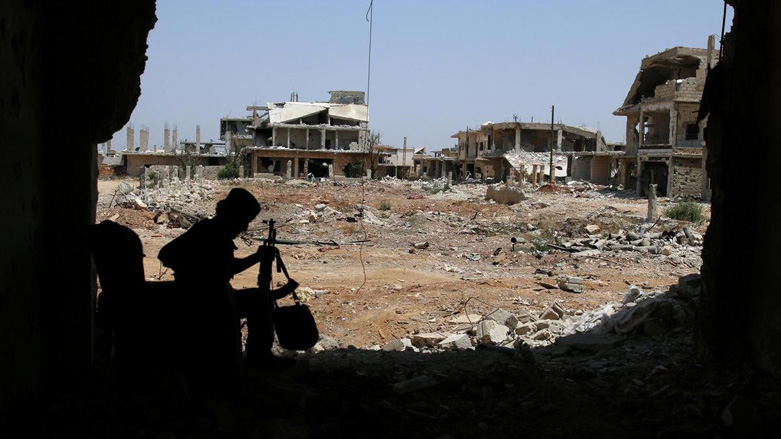Humanitarian 'catastrophe' looms, as Syrian regime presses offensive

WASHINGTON DC (Kurdistan24) – Some 160,000 Syrians are fleeing fighting in Dara’a Province, in the south of the country, moving toward the Jordanian and Israeli borders, as the regime continues to press an offensive in what was supposed to be a ceasefire zone.
Both borders are closed, and a massive humanitarian crisis looms, with the UN warning on Friday of a “catastrophe.”
Israel is sending aid to camps on the other side of its frontier with Syria, while Jordan is being pressed to take in the refugees.
The Syrian offensive, supported by Russian warplanes, aims at reestablishing regime control in a “deescalation zone,” negotiated among the US, Russia and Jordan last summer and reaffirmed by US President Donald Trump and Russian President Vladimir Putin in December.
Washington initially protested Damascus’ current military operation, warning that it “will take firm and appropriate measures in response to Syrian government violations.” However, the US did nothing, as its warnings were ignored, and it now seems resigned to the regime’s further consolidation of control, this time in the south of the country.
In fact, Trump, reportedly, is mulling the notion of pulling US forces out of Syria altogether and letting Russia become the guarantor of stability there.
Senior administration officials—including Secretary of Defense Jim Mattis, Secretary of State Mike Pompeo, and National Security Adviser John Bolton—have all expressed great wariness about Russian intentions, but Trump, himself, has seemed more sanguine and is to meet Putin next month in Helsinki, Finland.
As R. Nicholas Burns, an adviser on Russia in both the Clinton and Bush 43 administrations, told The New York Times, “It's like he’s untethered from his own administration."
On Monday, Trump met with King Abdullah II of Jordan, and discussed the possibility of a US withdrawal from Syria, according to CNN.
“Trump believes he can strike a deal” with Putin that would allow the US to ‘get out ASAP,’” it reported.
The US and an Arab partner force maintain a position at al-Tanf, near Syria’s border with Jordan and Iraq. That force sits astride the Baghdad-Damascus highway and blocks a major potential route for Iran’s “land bridge” to the Mediterranean.
The relatively small al-Tanf garrison has sporadically come under assault from shadowy, hostile forces.
However, the US has a much larger and more secure presence in northeast Syria, where some 2,000 American troops, along with a smaller contingent of French soldiers, are partnered with the Kurdish-led Syrian Democratic Forces (SDF).
Senior US military officers have repeatedly affirmed their satisfaction with the situation in that region and their intent to maintain forces there.
As Col. Thomas Veale, Director of Public Affairs for the US-led coalition against the Islamic State affirmed earlier this month, the SDF-controlled area of Syria is “the most secure and stable part of the country.”
“The military’s current assessment is that now is not the time to consider withdrawing from Syria,” CNN reported, citing a US defense official. However, as with Russia, Trump may have a different view than the agencies of his own administration.
Trump would be counting on Putin to ensure that Iran’s presence in Syria was limited and did not threaten Israel or Jordan.
However, some analysts see the alliance between Moscow and Tehran as strategic and argue that it is not a partnership the US can reasonably expect to disrupt.
“Tehran and Moscow share regional and global interests across the Middle East, North Africa, Caucasus, and Central Asia,” Christopher Kozak, a senior analyst at the Institute for the Study of War, wrote last year.
“Their common interests and overarching objective of expelling the US from the Middle East will likely bind Iran and Russia together into an enduring partnership,” he concluded.

